CES 2007 Part I: Convergence Happened and the Most Impressive Demo of CES
by Anand Lal Shimpi on January 11, 2007 6:53 PM EST- Posted in
- Displays
Corsair's Prepping for the Memory Boom
Our first meeting of the show was actually not with a CE company at all, rather a PC memory company: Corsair. Our discussion with Corsair would prove to be something of a trend for this year’s CES, as it centered around Windows Vista and its impact on the PC market in general.
Out of all of the manufacturers that will be affected by Vista and its hardware requirements, it is the memory manufacturers that stand to benefit the most. Vista needs more system memory, can benefit from Ready Boost enabled USB flash drives, supports Hybrid drives and Intel’s on-motherboard flash technology (Robson). While CPU and GPU requirements are greater with Vista, given that you can get premium certification with Intel’s integrated graphics, the requirements aren’t all that high. What Vista will do, more than anything, is help sell more memory - whether it is in the form of DDR2 or flash devices.
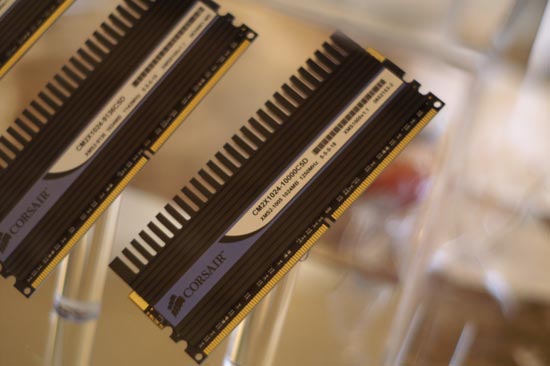
Corsair had its Dominator line of memory on display, including its recently announced PC10000 offering. But it wasn’t DDR2 that was the most interesting at Corsair’s suite, rather Corsair’s Flash memory lineup.
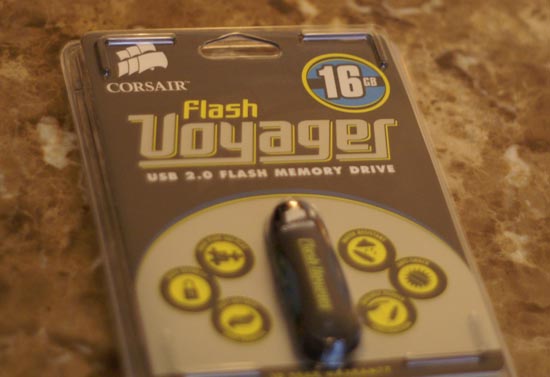
In the past year we have seen Flash drives get very big, very quickly. Corsair showed us its 16GB MLC based NAND flash, which we will be reviewing soon, as well as its faster 8GB SLC based USB drive. The difference in performance between SLC and MLC is forcing Corsair to brand its SLC drives differently, which you can see below:
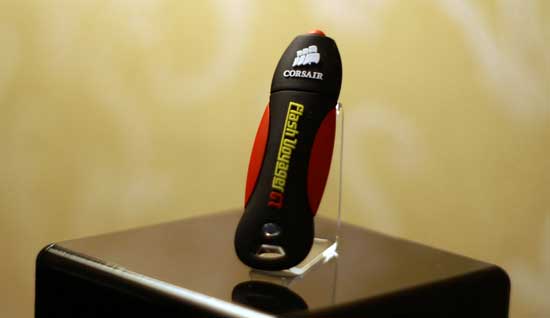
Flash Voyager GT drives will use SLC flash
In the future, all SLC flash based devices will have the “GT” suffix while MLC devices won’t. The idea is that MLC devices are significantly slower than their SLC counterparts, which is the tradeoff you make when getting twice the storage capacity thanks to being able to store multiple bits per cell.
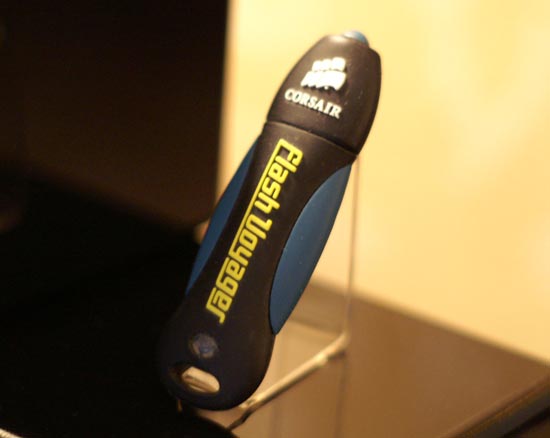
Regular Flash Voyager drives will be MLC only
While USB drives have become a clear commodity, Corsair is doing its best to differentiate in a very different manner than much of its competition. When Corsair introduced the Flash Voyager what set it apart was the fact that it was a bit more rugged than its competition. While everyone else is trying to make USB drives smaller, Corsair has been hard at work to make their drives more rugged. Enter the G-Force:

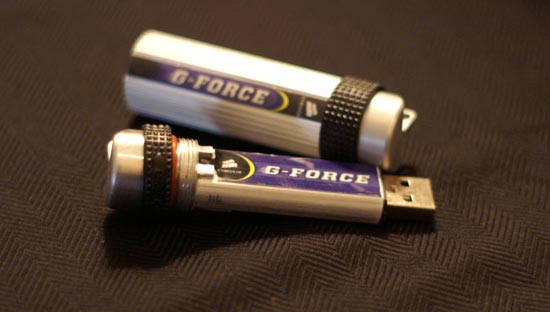
This waterproof drive takes rugged to a new level and feels like it would be at home sitting in a Hummer.
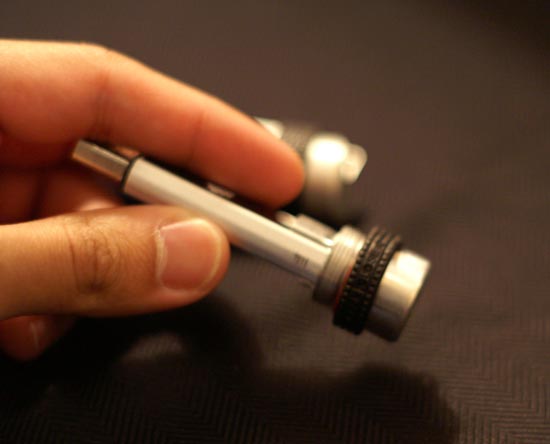
The G-Force is by no means small, but it actually feels right in your hands and if you’re prone to dropping/breaking things it’s not a bad option. At the show Corsair only had a prototype, but the final version will be available in a matter of weeks. Corsair is convinced that NVIDIA won’t be upset by the naming of the product, as there’s no “e” in its G-Force USB drive.
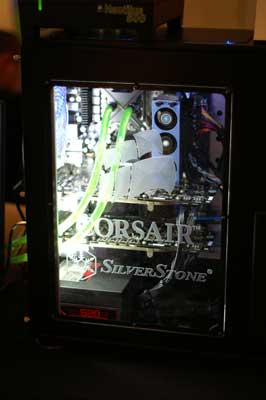
Speaking of NVIDIA, Corsair was also proudly showing off its 620W power supply running a pair of GeForce 8800 GTXs, bringing to light the fact that you don’t need an 800W+ PSU to run NVIDIA’s highest end configuration, you just need an efficient PSU.










18 Comments
View All Comments
artifex - Monday, January 15, 2007 - link
I'm getting offers in the ads from companies who claim to offer "free" stuff provided you join a lot of trial offers and buy a bunch of stuff and sucker your friends into joining, also.Does Anandtech approve of these ads? Don't say you have no control over them, because you do. You can complain to your provider, IndustryBrains, or switch if they continue to show these things.
The suckier the ads are, the less credibility you have among people who see them, and the more likely everyone will use adblockers, which will kill your revenue.
artifex - Monday, January 15, 2007 - link
You guys must be too young to remember G-Force, the anime. :)When Nvidia announced their first GeForce product, I thought they might get sued, themselves. But of course, g-force is a term that predates either.
Houdani - Friday, January 12, 2007 - link
<--- that's me being grumpy about Toshiba & Canon not displaying the SED TVs at CES'07 due to legal wranglings with Nano-Proprietary. This, of course, is only pushing out their availability that much farther, further closing the window on this tech. Hrmph!semo - Friday, January 12, 2007 - link
why is that such an issue? what is performance? some numbers you couldn't care less when playing assuming the fps stay above a certain number. you expect performance to drop when enabling other eye candy, but when it comes to realism everyone seems to complain.this makes me think, are ppl buying better video cards for the increased "performance" or for the more immersive experience.
Houdani - Friday, January 12, 2007 - link
Physics doesn't necessarily have to mean that more polygons are pushed to the screen (such as when things go boom). When this happens, then it taxes the video card more and has a subsequent impact on performance. I think this relationship is understood and accepted.However, if the physics don't add more polygons but instead cause objects to interact more realistically then we're at the spot where we don't want overall performance to slow down. This is where Ageia needs to flex their strength and not disappoint their audience.
In *software* we already have the ability to have great physics, but at a loss to performance. For Ageia to excel, they necessarily have to remove that hindrance and give us the physics without the performance hit -- otherwise they've provided us with little or no benefit, really.
semo - Friday, January 12, 2007 - link
that makes sense. how much of a performance hit are talking here anyway. and how much of the physics calculations are outsourced to the ppu (and are there any big overheads as a result)LoneWolf15 - Friday, January 12, 2007 - link
It would be, if you can make sure this product is extremely difficult to damage.
I've seen way too many students that don't care how they treat something a school gives them --after all, it's (in their minds) not like they bought and paid for it with their own money (the concept that their parents' taxes did is irrelevant in their minds in those cases).
I agree that the concept is brilliant on paper, and it should be perfect for higher education. In the K-12 evnironment though, unless there's a way of accountability that works without making parents upset, or a way of making them durable enough that this is not an issue, this could be an idea that falls one tiny step short of a great finish.
bokep - Friday, January 12, 2007 - link
I've been following OLEDs since I first learned about it over half a decade ago. Nice to see it working that well and should be coming out within the next few years.CSMR - Thursday, January 11, 2007 - link
Great reviews, thanks for keeping the world updated!archcommus - Thursday, January 11, 2007 - link
...let's be serious here, LCD is surely getting the job done just fine.